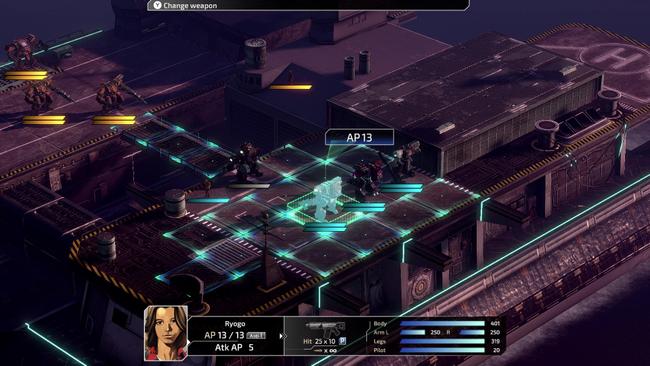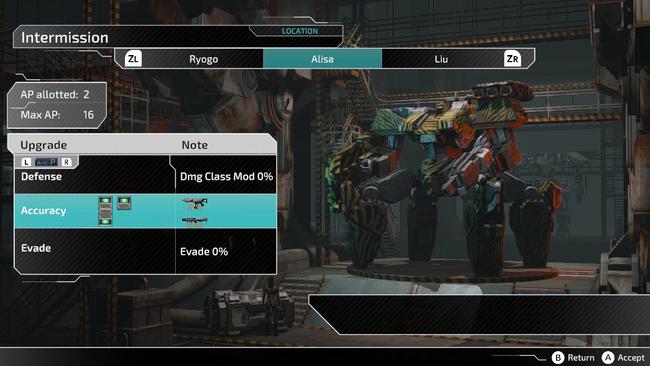
Front Mission 3: Remake Review
Released for the PlayStation in 1999 (Japan) and 2000 (North America), Front Mission 3 marked the series’ first outing outside Japan. A turn-based strategy RPG set in a world of geopolitical turmoil and mechanized warfare, the game promised a mix of political intrigue, branching storylines, and deep customization. I was excited for this series to be re-released on modern consoles for a new generation to experience. While the bones of Front Mission 3 remain mostly intact in this remake, the remake’s presentation is bewildering. While Front Mission 3 is an excellent game, Front Mission 3: Remake is not.
FM3 takes place in Southeast Asia during a cold war between the Oceania Cooperative Union (OCU) and the People’s Republic of Da Han Zhong (DHZ). Over the years, geopolitical movements have led to increased scrutiny against the OCU, with flared tensions bringing the involvement of the United States of the New Continent (USN) to take the lead in peacekeeping.
Players are introduced to Kazuki Takemura, a brash Wanzer pilot, as he tests a new prototype unit. After the tutorial mission, Kazuki is told by his friend Ryogo Kusama that some Wanzers are due to be transported to a Japanese Defense Force (JDF) base. The game has two separate storylines, determined by your response to Kusama’s request to accompany him to deliver the units. Going with Kusama triggers the USN scenario; rejecting his request sends us down the other branching path with the DHZ plotline, both of which are kicked off with the JDF base explosion. The diverging plotlines see Kazuki as he works to stop the spread of advanced biological weapons known as MIDAS. The game’s story and themes of biological warfare and national loyalty still feel fresh and relevant after all this time.

The gameplay loop is expectedly linear: cutscene, mission, intermission, with most non-combat interaction relegated to shuffling through menus to prepare your units for the next encounter, where Wanzers take their place as the star of the show. However, Front Mission 3 brings some changes to the series’ turn-based combat, including allowing pilots to be hurt while operating their Wanzer, or even ejected from their Wanzer entirely. If ejected, the pilot can fight on foot or hack another unit on the field. Action Points, a feature from Front Mission 2 which governs a unit’s berth for action, returns here to great effect - especially when I was able to utilize Action Links to allow numerous units to support each other during combat.
Every Wanzer is made up of four targetable parts: the body, left and right arm, and legs. Destroying the body knocks out the entire unit, while disabling an arm removes that arm’s weapon. Likewise, damaging the legs restricts movement. There is a wide range of weapon types for long and short-range combat, allowing you to customize Wanzers to your preference. Even deciding what weapon to use is strategic. Close-range weapons do not provoke a counterattack but require getting up close, while long-range weapons do allow for retaliation. Customization is a major draw here, allowing players to swap out parts, weapons, armor, and even CPUs to create specialized roles that give a feeling like you are playing Mecha Legos, in the best sense possible. These mechanics still work because they were well-conceived the first time. Here they’re trapped within this remake’s sluggish performance and user interface, and frankly, the team behind this remake does not deserve commendation for merely preserving what worked about the original.

Graphically, this remake looks like it got stuck somewhere between a PS2 remaster and a mobile port. Yes, they updated the visuals. Technically. But in almost every instance, I found myself longing for the graphical presentation of the game’s original release on the PlayStation. Yes, those are jagged and pixel-y in that new millennium kinda way, but it was at least interesting to look at. Here, backgrounds and environments are uninspired, bland, and cheap-looking.
The Wanzers look like chunky blocks of metal taped together with no texture detail to speak of. I think they look worse here than they did in 2000. Same with the character portraits, which look like someone ran them through an AI art filter trained on early Dreamcast box art. Nobody asked for these nightmarish compositions for either character portraits or the original’s art assets. We don’t have confirmation they used AI, but Cullen’s piece here lays out the evidence for your own eyes. The Switch version doesn’t do the visuals any favors either. There are frequent jaggies, weird lighting inconsistencies, and an overall lack of polish as the game struggles.
For music, players can choose between the original and modern arrangements of Koji Hayama and Hayato Matsuo’s ominous techno-military synths - and both sound great. The rest of the sound design, however, is lacking. Sound effects are sparse and lack realism. There’s no voice acting, which is permissible, I suppose, but the soundscape is so barren it almost makes you nostalgic for PlayStation disc loading noises.

Thankfully, there is some good here. There are a host of options, including quick movement and combat for those wanting to speed things up. There are also some visual options for Wanzer customization, which is nice. There’s also a surprisingly robust in-game internet feature, complete with fake forums, fictional news outlets, and even a hacking minigame. This adds depth to the lore and makes the world feel significantly lived in - even if navigating this information-rich digital world can feel a bit clunky through the in-game menus.
Is this the worst remake out there? No. The core game is still great, if this is the only way you are able to play it. But this version needed more than a fresh coat of paint and a shrug. Imagine if this series, or even just the original standout third entry, had been given that Star Ocean 2 Remaster level of quality and attention. I’d be fawning over a loving recreation of a PlayStation game that could galvanize a legion of new followers into this heady mecha series.
Instead, we got a half-baked museum exhibit.